9 Places to Relive American History
These U.S. travel destinations tell the nation’s story through preservation, research, and reenactment. From prehistory to modern times, this is a bucket list for American history buffs.
Hovenweep
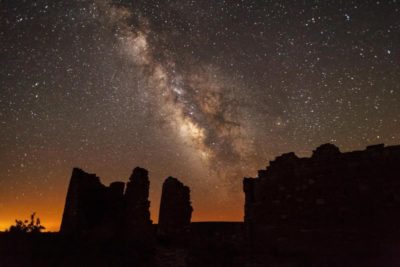
Built by ancestral Puebloans between A.D. 1200 and 1300, the towers of Hovenweep are a fascinating display of early masonry located at the border of Colorado and Utah, about 25 miles from the Four Corners. Hiking trails in the park offer views of the ruins as well as the canyons surrounding the Cajon Mesa. Hovenweep’s remoteness also yields brilliant stargazing opportunities from the onsite tent camp.
https://www.nps.gov/hove/index.htm
Minute Man Park
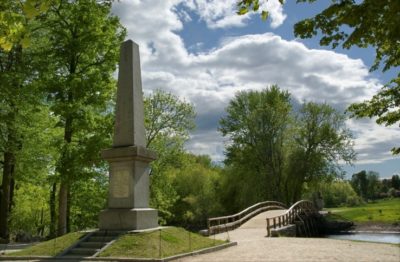
A wealth of American history lies in this National Historic Park that stretches from Concord to Lexington, Massachusetts. The five-mile Battle Road Trail leads visitors through various sites of the first battle of the American Revolution, and at the North Bridge you can relive “the shot heard ’round the world.” The Wayside, a preserved Colonial home, housed authors Louisa May Alcott, Nathaniel Hawthorne, and Margaret Sidney throughout the 19th century, and Henry David Thoreau’s Walden Pond is located just south of the site.
https://www.nps.gov/mima/index.htm
Hamilton Grange
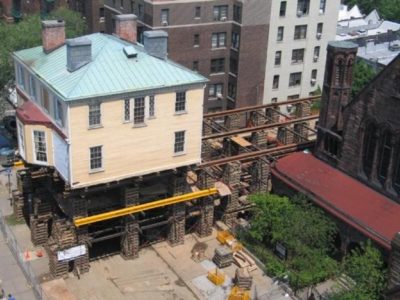
Alexander Hamilton’s Harlem home was moved twice before landing in its current spot in Saint Nicholas Park in Manhattan. The controversial Founding Father completed the home in 1802 on his 32-acre estate in upper Manhattan. Hamilton Grange tells the story of Hamilton’s self-made career and influential vision of industry. The recent restoration of the mansion was completed, inside and out, to replicate Alexander Hamilton’s original furnishings and landscaping.
https://www.nps.gov/hagr/index.htm
Homestead National Monument
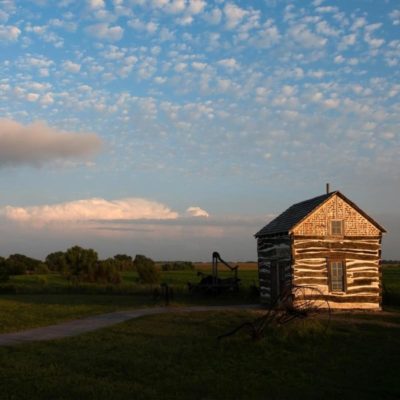
Abraham Lincoln’s Homestead Act of 1862 provided 270 million acres of free land to Americans eager to start a life out West. The Homestead National Monument was established by Franklin D. Roosevelt in southeast Nebraska to commemorate the impact of Lincoln’s law on the economic and cultural development of the West. The site features 211 acres of prairie and woodlands preserved to represent the plains before settlement. You can tour an 1867 cabin and the Freeman School, a one-room schoolhouse that served students from 1872 to 1967.
https://www.nps.gov/home/index.htm
Manassas National Battlefield Park
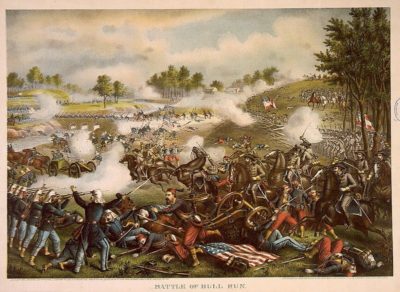
The First Battle of Bull Run, the start of the Civil War, took place on the well-preserved grounds of Manassas National Battlefield Park. Civil War history buffs can experience reenactments and cannon-firing at this site just 25 miles from Washington D.C. Antietam, Harpers Ferry, and Fredericksburg battlefields are a short drive from Manassas as well.
https://www.nps.gov/mana/index.htm
Henry Ford Museum
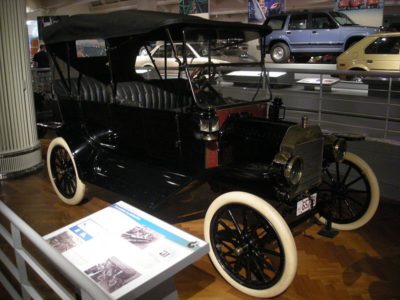
The largest museum complex in the country houses a plethora of artifacts from American history, particularly from the Industrial Revolution. Thomas Edison’s laboratory, JFK’s presidential limousine, and the bus on which Rosa Parks took a stand all reside at the museum’s campus in Dearborn, Michigan. Most notable is the museum’s collection of cars that spans the history of automobiles in the United States.
New Orleans Jazz National Historical Park
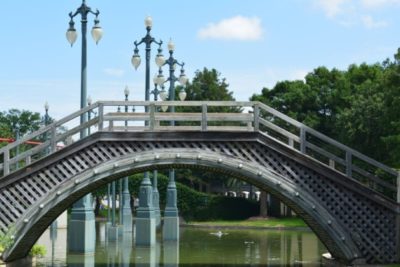
Located in Louis Armstrong Park just blocks away from the French Quarter, the New Orleans Jazz National Historical Park is a new kind of national park that offers programs and tours to educate visitors on the birthplace of jazz. Rangers guide groups through jazz walks of the city as well as interactive demonstrations. The park also offers free concerts at a venue in the French Quarter.
https://www.nps.gov/jazz/index.htm
Birmingham Civil Rights Institute
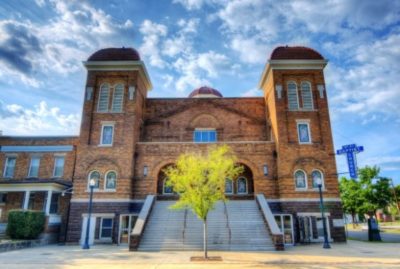
The BCRI strives to act as a “living memorial” to the civil rights story of Birmingham, Alabama. Dramatic and interactive exhibits depict the civil rights movement in Birmingham as a necessity for understanding present and future human rights, as well as the past. The museum is situated in downtown Birmingham, close to other key sites from the Birmingham movement.
http://www.bcri.org/index.html
USS Midway

From 1945 to 1992 the USS Midway was an active aircraft carrier, but now the vessel rests in San Diego as a museum ship. Guided tours, flight simulators, and 29 restored aircraft from World War II, the Korean War, the Vietnam War, and Operation Desert Storm are aboard the massive carrier.
Hit the Road!
Much has been written about America’s love affair with the automobile; the very phrase has become a cliché. But the essential truth remains that Americans love to travel. Immigration, Manifest Destiny, the Great Migration—the instinct to light out for Somewhere Else seems coded into our national DNA. In honor of that ancestral urge, here are three road trips inspired by the pioneer routes and trails that opened up this country to expansion. Leave time for side trips along the way; the journey, in this case, really is as important—and as fun—as the destination.
History Highway
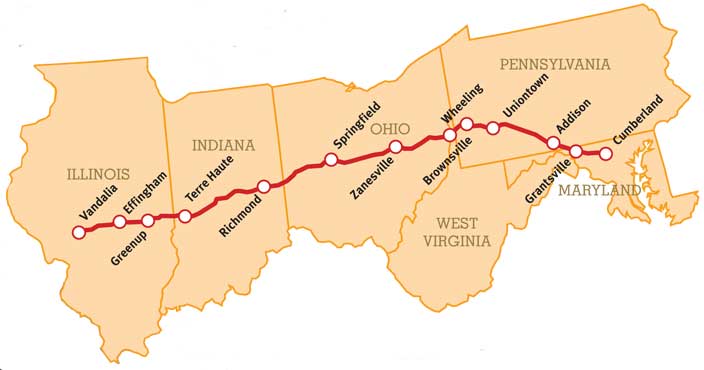
In 1806 Thomas Jefferson approved federal funding for one of the first interstate road projects. Known today as the Historic National Road, it stretches 824 miles through six states, from the East Coast nearly to the Mississippi, following the modern I-70 for much of its length.
As befits the route that made the westward migration possible for thousands of settlers, the Road is strewn with sites of historical interest. From the eastern terminus near Hollins Market, the oldest of Baltimore’s public markets and centerpiece of the artsy Union Square neighborhood (market open Tuesday-Saturday; www.union-square.us), you’ll pass Casselman River Bridge State Park, as well as historic inns and tollhouses. From Maryland, the Road swings west through southern Pennsylvania, with a stop at the Fort Necessity National Battlefield, site of the first battle of the French and Indian War. The Old Petersburg Tollhouse, built from native-cut stone, still stands along the roadside.
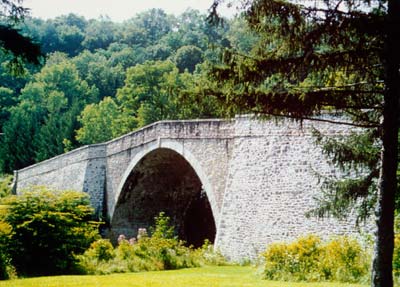
Photo: Lardner/Klein Landscape Architects, Jim Klein
Passing through a corner of West Virginia, the Road continues into Ohio, where you can ponder the changes in American transportation at the Aviation Heritage National Historical Park in Dayton (www.aviationheritagearea.org). Cut across the entire breadth of Indiana, taking in the famous “Antique Alley”—an extensive loop encompassing more than 900 shops and dealers; it’s the ultimate destination for any fan of collectibles (www.visitrichmond.org). The Road ends in Illinois, the land of Lincoln. Leave time for visits to the Lincoln Log Cabin State Historic Site (www.lincolnlogcabin.org) as well as the Lincoln School Museum in Martinsville (open Sunday afternoons through the summer, 217-382-6666).
Tracing a Path
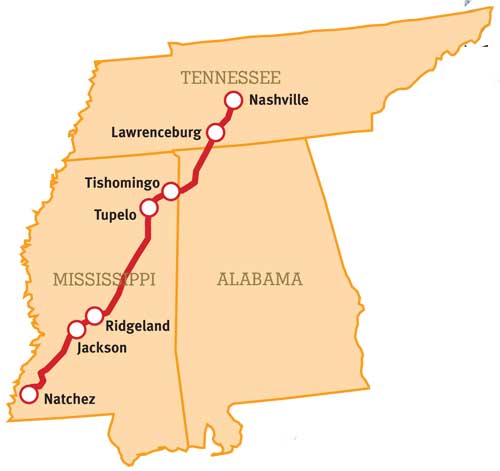
Following what is perhaps the oldest continuously used travel route in the U.S., the Natchez Trace Parkway— a 444-mile stretch of two-lane blacktop running south- by-southwest from Nashville to the banks of the Mississippi—began as a dirt trail used by the earliest European traders and missionaries, and by local Native American tribes for centuries before that. Travel here was once so hazardous that the trail was called “The Devil’s Backbone.” Today, the Parkway offers the natural beauty and rich cultural heritage of the South. Note: Because it sits on mostly high ground, only a few areas of the Parkway were impacted by the flood waters that hit the Nashville area earlier this year. While the entire Parkway is expected to be passable by summer, it’s always a good idea to call ahead and confirm your itinerary.
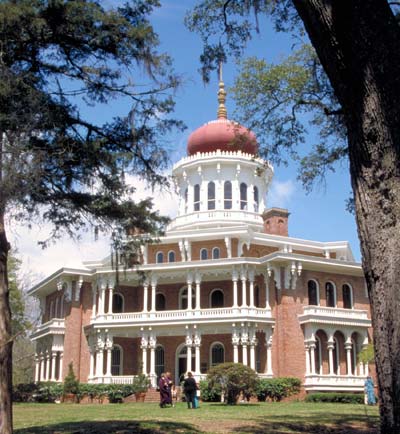
Photo by Dennis Adams
On the Parkway, two wheels are as good as four, as the entire road is a designated bicycling area. Along the way, there’s boating and fishing at Laurel Hill Lake in Lawrenceville, Tennessee (931-762-7200), and hiking, camping, and nature trails at Tishomingo State Park in Mississippi (662-438-6914). Or simply stop to smell the wildflowers tracing the trail.
The Parkway is rich in Native American historical sites. In Tupelo you will find the ceremonial Emerald Mound, the Grand Village of the Natchez, and the Chickasaw Village and Fort. You can also pay homage to “the King” at the Elvis Presley Birthplace (www.elvispresleybirthplace.com).
At the Mississippi Crafts Center in Ridgeland, you’ll find artwork and housewares from regional crafters working in traditional and contemporary forms (www.mscrafts.org). Finally, surrender to the charms of old Natchez and view gracious antebellum homes in the city’s historic district (www.natchezms.com).
Rolling on the River
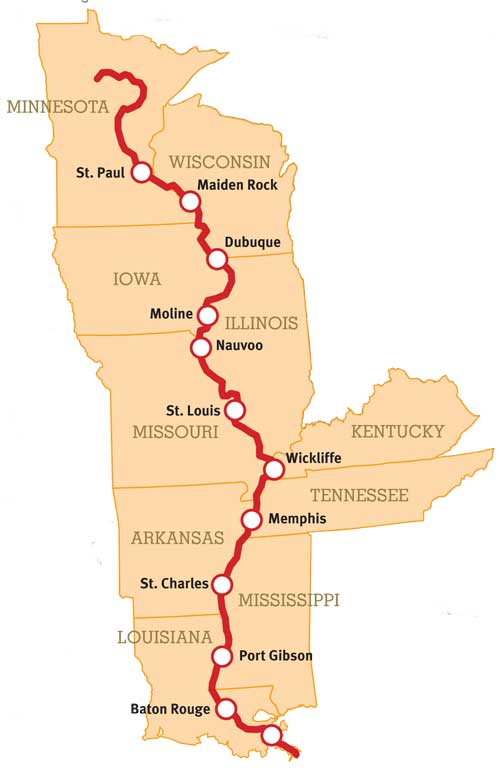
The mighty Mississippi is, in a way, the original interstate highway, used for ages to transport goods and passengers downriver. Trace that epic path on the Great River Road National Scenic Byway—a route following the course of the Mississippi through 10 states and over 2,000 miles, from the headwaters to the delta, from St. Paul to New Orleans, straight through the heart of America.
Spend a week or two following Old Man River downstream—through Minnesota, Wisconsin, Iowa, Illinois, Missouri, Kentucky, Tennessee, Arkansas, Mississippi, and finally, Louisiana—and you’ll sample a great swathe of the American experience. Along with unparalleled views of the “Father of Waters,” there are ample stops for bird and wildlife watching, outdoor recreation, shopping, historical sightseeing, and more.
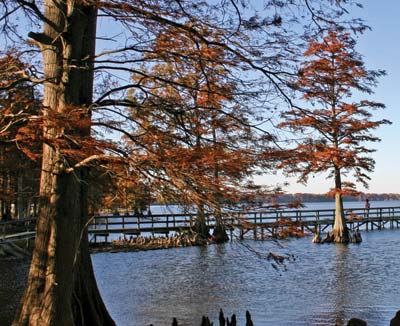
Photo by Amie Vanderford.
Music runs deep along the river, and many festivals and performance series are held along the route, from Wisconsin’s Riverfest (June 30-July 4, www.riverfestlacrosse.com), presenting dozens of musical groups on six stages, to the annual blues and jazz fests in Davenport, Iowa; from the St. Louis Municipal Opera—this year featuring live outdoor performances of Beauty and the Beast, The Sound of Music, Damn Yankees, and more—to the renowned jazz clubs of New Orleans (www.riverroads.com).